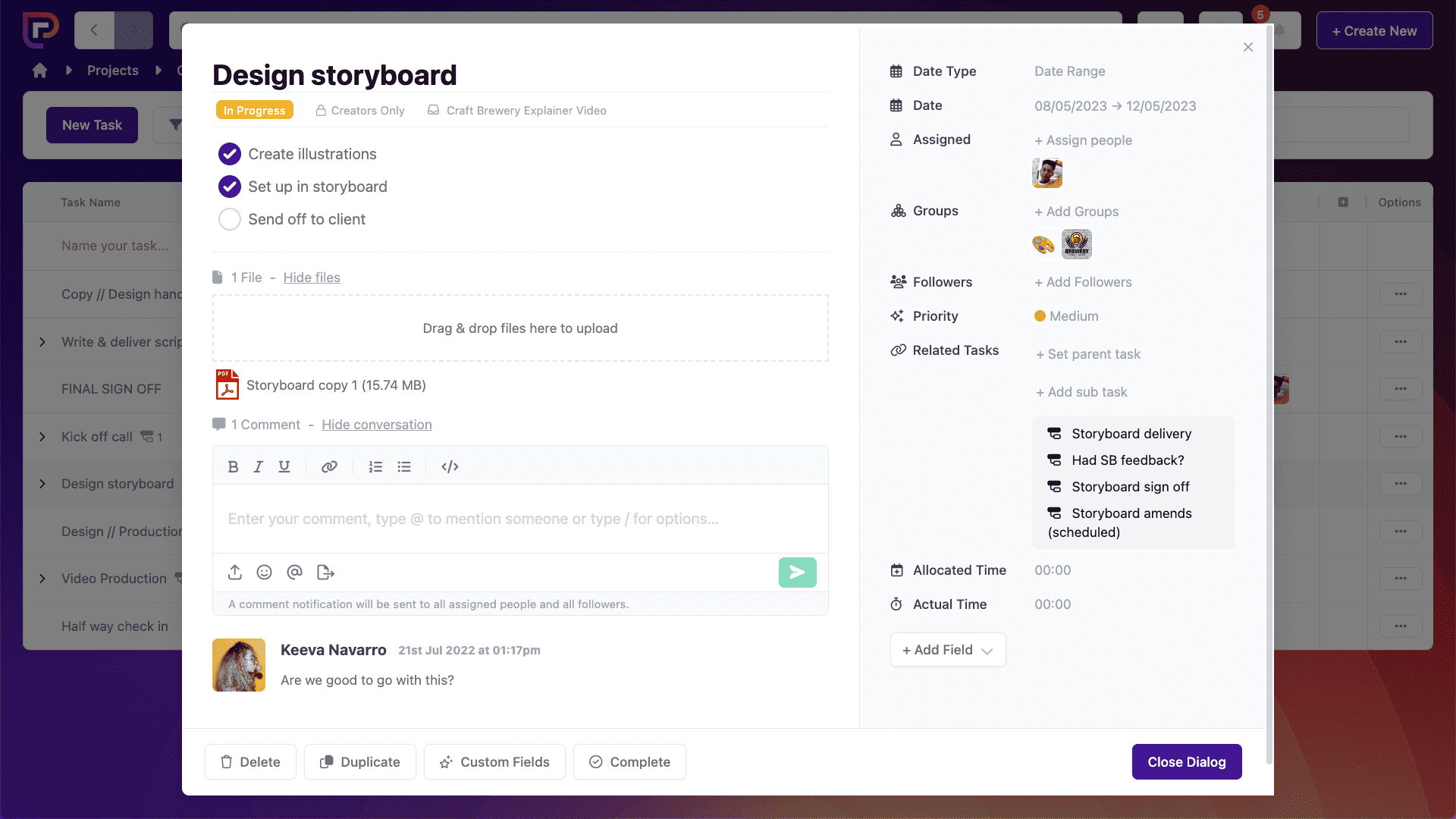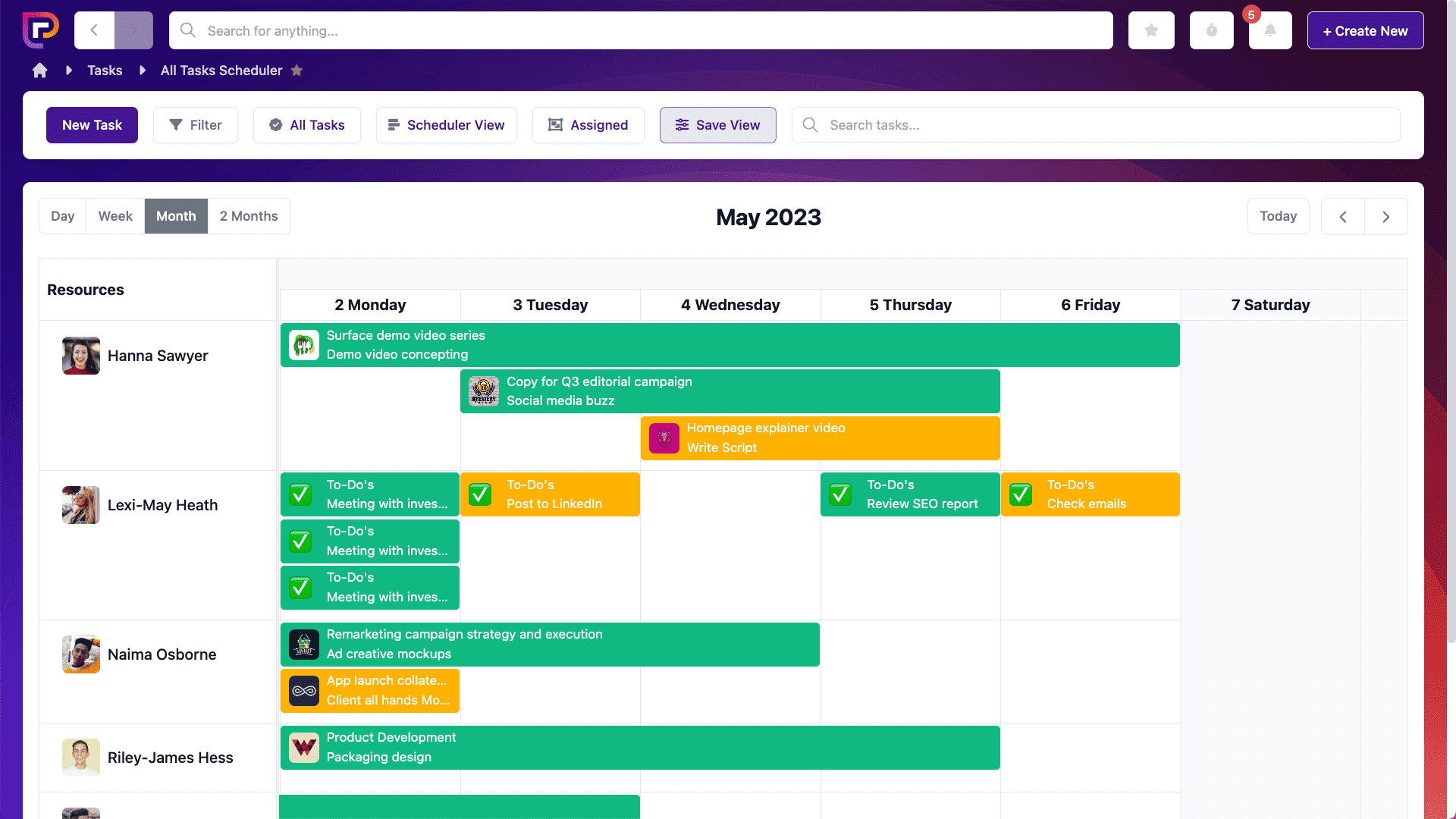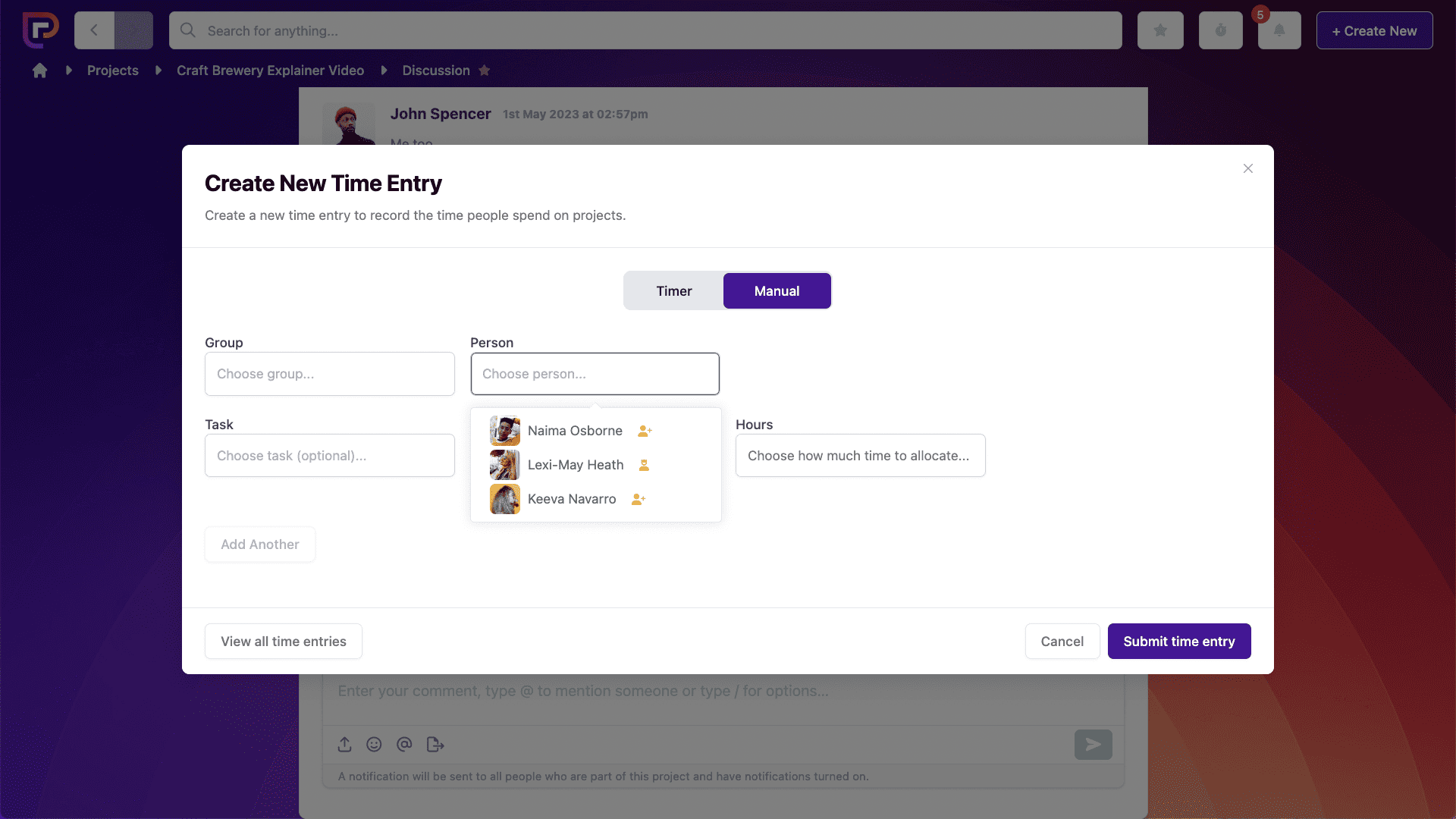Last updated on 9th December 2022
Wassup?
A nonsensical phrase. That everyone knows and recognises. All thanks to marketing.
Sometimes a marketing project is so incredibly good that it becomes a celebrated part of pop culture. The marketing project we’re referring to here is the famous Budweiser ad that ran from 1999-2002. It was also – in another genius marketing move – rebooted for 2020:
The phrase has been featured in tons of popular TV shows, including Friends, The Office, and The Simpsons – and every single time someone says Wassup, they think of Budweiser.
That’s good marketing.
So, how can you ensure that your marketing projects are successful?
Being on a marketing team can sometimes feel like running on a hamster wheel while someone throws juggling balls at you – you need to be in constant motion while also thinking ahead to your next project, and your next one, and your next one.
You need to be organised, efficient, analytical, and creative. And it all starts with project management.
In this article, we’re going to break down project management for marketing teams so that you can continually be at the top of your game and always know wassup.
Article Contents
Before your project starts
1. Assess where you’re at right now
To begin, take a look at your current process. By assessing where you’re at right now, you can drop the things that aren’t working well for your marketing projects and keep those processes that do work well.
According to our 2021 Project Management Statistics, 44% of people manage their tasks on paper, 35% use task management software, 11% plan out their days on spreadsheets, while the remaining 10% use other tools.
If you’re reading this and thinking – “I do none of this!” Don’t worry. That’s why we’re here. You’d be surprised how many companies resort to ad-hoc marketing because they have no process in place.
But this inconsistency is not going to contribute to your success. When it comes to marketing – whether content, social, media, video, or otherwise – consistency is key.
According to a Hubspot study of over 13,000 companies, it was discovered that brands that published articles 16 times a month saw 3.5 times more traffic than other brands.
Consistency like this sends a good signal to search engines that your site is a reputable and regularly updated source of information.
So, planning your marketing in advance and having a solid process in place is crucially important for the success of your campaigns.
2. Implement a Process
Going forward, whether you had a process before or not (or maybe something hovering in between), you need one now that works for your whole team.
You need something that will work across all of your different marketing projects. Something that’s repeatable, scalable, and flexible.
Fortunately, you don’t need to create a process from the ground up as there are plenty of amazing project management tools out there.
These are pre-populated with tasks that can be assigned to different team members, so that you can keep your marketing efforts organised and on-track.
And, of course, you can customise these projects in any way that fits your company.
3. Create brief templates
Once you have your process implemented and you know how you’re going to manage your marketing efforts going forward, it can help to create some project briefs that will make everything run more smoothly.
A solid marketing brief does 3 things:
- It communications the purpose of the campaign
- Outlines, very clearly, the tone, target market, and timeline
- Sets goals and measurements for success
A brief template – for each different type of content – will make it easier to outline your requirements for every campaign, and also makes it easy for new people (such as freelancers) to jump on board with your marketing projects.
When using Project.co, you can easily share your marketing briefs by uploading them to the files section or adding your files to comments on the discussions tab.
This gives everyone a chance to review and feedback on the brief before getting started on the project.
Another feature that’s great for this is the tasks section. Notes and files can be added to any task so that team members can get notified of any outstanding work they need to review:

You can use the files section to upload documents, or if you prefer to work collaboratively then just drop a link to your live document in the notes box. You can even embed files from the tools you already use for collaboration.

Day-to-day project management
1. Create a schedule
One of the most important things you can do to manage your marketing projects is create a schedule. Schedules help you stay on track and ensure you complete your projects efficiently.
Within Project.co there are many different ways that you can create your schedule visually, from a kanban view that gives you an overall look at the project:

To a scheduler view, where you can see what your whole team is working on at once:

When planning your marketing campaigns, it’s easy to set up a new project within Project.co, specifically for that campaign. And from there you can add your team members and assign tasks to help everyone stay on track.
The great thing is, because there’s no limit to the number of projects you can create, you can add one for every facet of your marketing – from email to social media.
Speaking of social media, creating a schedule of upcoming posts is a great way to stay on track and maintain a consistent social media presence.
There are tools out there that can be used in conjunction with a project management platform to help you to schedule your social media posts, and some will even post for you automatically, like Hootsuite and Buffer.
2. Prioritize
The thing about marketing is, there are so many different directions to go in that you can almost become paralysed by choice.
This can be exemplified if you have lots of different people on your team fighting for lots of different ideas – some people want to go for the zany social media video that will drum up attention, others believe you should market your product with a straight-forward demo video.
To avoid becoming stuck, you need to prioritize your marketing. For each facet of your marketing, make a list of ideas for the upcoming quarter.
When you have your list, start to critique it. Define the goal of each marketing idea and think about how that aligns with what you’re trying to achieve. The infographic that covers the history of beards may seem like a fun idea, but would that get more click-throughs than a simple list-focused email titled: “10 reasons why our beard oil is better than the one you’re using”?
Keep in mind that the main reason for marketing is to earn a high ROI and grow your business. According to Hubspot, only 35% of marketers said that understanding the ROI of their campaigns is “Very Important” or “Extremely Important” – but without ROI you can’t understand which marketing campaigns are successful and which are just money down the drain.
3. Communicate and be organised
We can all agree that marketing creates leads and leads create sales – and sales help your business to grow.
But, apparently that’s where the agreement ends for a lot of businesses. According to the Wyzowl 2020 survey of sales professionals, more than 1 in 10 (11%) felt that marketing didn’t support the sales function in their business well at all.
In order for your marketing campaigns to be successful, communication between both sales and marketing teams is crucial.
A project management tool can help with this. Project.co was built with communication at its heart. All relevant team members can be added to projects, and the discussions tab ensures that all communication is centralised in one, easy-to-find place.
The notes section is also a great place for sales and marketing teams to share important notes back and forth – for example, what the focus is for this quarter or any useful feedback from clients.

Organisation is also of the utmost importance when it comes to marketing as there is a constant need to be looking forward towards the next campaign.
Project.co can help with this, too. We’ve already talked about the convenience of assigning tasks to different team members, and the ability to view all tasks at a glance.
But there is also the option to track the time spent by each team member, on each project. The time functionality makes it easy for you to log the time spent on your campaigns at the end of each day, helping you to get an even clearer picture of your ROI.

3 Top project management tips
1. Keep everything in one place
Organisation 101 – know where everything is.
Keeping everything in one place – from team communications to creative files – will make it easy for you to manage your marketing projects, even when the unexpected happens.
For example, let’s say the team member who is managing your next big marketing campaign gets sick. By keeping everything in one place there’s no need to trawl through their emails, try to guess their passwords, or call them up at home – because everyone has access to everything.
This is the beauty of a project management tool, like Project.co. Everything you need for your project – discussions, files, notes, schedules – are all right there for you, whenever you need them.
2. Define your project requirements
It’s not enough to just have a theme or a title for your marketing project, and then run off with it. This could cause issues and delays.
Instead, define your project requirements as stringently as you can from the get-go. It’s not exactly the most fun way to do things, but it will help your team to remain on track and keep the goal of the project in mind at all times.
At the start, set out your goal and an expected time frame for the project. You can also lay out other parameters here, such as a list of smaller tasks that need to be completed and the details of any third-parties that will be involved.
As your project progresses, don’t forget to regularly review it with the whole team to ensure things are going smoothly and according to plan.
3. Use collaboration tools
Marketing really is a team effort and, as such, collaboration is key. Fortunately, there are so many amazing collaboration tools out there that you’ll be able to keep in touch with your team every step of the way.
A couple of examples are Slack – a team-based messaging platform that allows you to chat to colleagues in real-time:

And Google Hangouts, if you’d prefer to chat with your team face-to-face.
Project.co also facilitates real-time collaboration through an embeds tool. Under the embeds tab, you can connect your project to any marketing collateral you’re currently working on so that everyone in your team can collaborate without ever having to leave the project!

Final thoughts
Marketing is often referred to as a Sisyphean task because of its never-ending nature, but that’s not true. According to Greek mythology, Sisyphus is still pushing that huge boulder up a steep hill in the underworld, and he will never see any reward from it.
That’s where marketing differs. Yes, it’s never-ending – but it can be so rewarding! Well-managed and insightful marketing projects will become the lifeblood of your company, increasing brand awareness and bringing in leads left and right.
You just need to know how to manage them. Open up a marketing project with Project.co today to get started.

